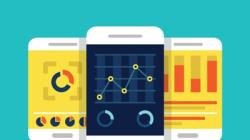The KPIs you choose to measure the performance of your business, the KPIs you use in traffic lights, and the gauges in your dashboards drive the efforts of your teams and shape your business. In this article, we explain the strategic role of dashboard design and how to set the right KPIs and benchmarks for your business.
The financial numbers only show one side of the story. When FP&A professionals are presenting the complete story behind the numbers, soft data needs to be collected and incorporated. The big question is, what data and where is it?
Organisations are increasingly adopting data-driven approaches to decision-making. This is natural, given the amount of data we now have on hand. All-in-all, data-driven is now perceived as the right way to do business. If you're doing "data-driven decision making," you're doing it right. But are you really?
FP&A teams are skilled at pulling data from various information systems, manipulating it, and gathering insights. Although FP&A plays a crucial role in supporting companies in becoming more intelligent, there is a lot to think about when getting ready for big data and the FP&A transformation journey. Below are a few things to consider. This list will continue to evolve as we all learn from each other.
Now, more than ever, the FP&A profession stands to propel itself forward as the premier business partner for Commercial and Operational teams. While FP&A content trending today may center around technological advances, the focus herein will instead shift to the bedrock principle that defines the FP&A profession: striking the proper balance between analytical depth and high-level storytelling.
Many Finance professionals have an incorrect perception of the word “insight”, but here is a simple way to validate if you provide insight or “just” data. Ask yourself, what decision a business can make based on the data you have provided? Insight is something valuable and not yet known by the business, but when known, the business uses it to make decisions that are data-driven.
Pagination
Subscribe to
FP&A Trends Digest

We will regularly update you on the latest trends and developments in FP&A. Take the opportunity to have articles written by finance thought leaders delivered directly to your inbox; watch compelling webinars; connect with like-minded professionals; and become a part of our global community.






